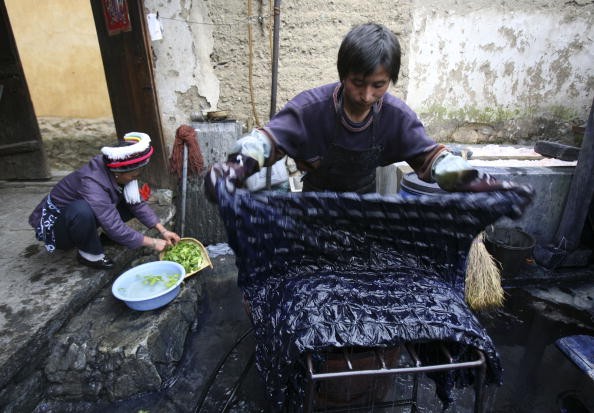One of the largest tie-dye operations in China located in Zhoucheng Village, Yunnan Province, uses no modern machinery and has recently started getting support from the government, as reported by China Daily.
The Puzhen tie-dye workshop in Zhoucheng Village is characterized by having big wooden buckets filled with a dark blue liquid and floral patterned clothes fluttering in the wind from ropes attached to poles.
In the workshop, elderly women are usually seen sewing sheets.
"When you look at pieces of cloth under the sun, you will notice countless needle holes in them," said Duan Shukun, the owner of the workshop. "That can only be realized by hand. Machines won't do."
Similar tie-dye practices can be found in the provinces of Guizhou, Jiangsu and Sichuan, but it is only in Zhoucheng where you will find almost every household involved in the craft. Around 6,000 villagers out of 10,000 are a part of the dozens of tie-dye cloth producers in the province.
The way the locals make the tie-dye cloth requires at least eight stages of delicate work. In 2006, it was named a national intangible cultural heritage.
It starts with drawing floral patterns on plastic sheets. Then, a tool that looks like a needle is used to puncture the edges of the patterns.
The punctured sheet is placed on a white cloth and plastered with paint that infiltrates the cloth. The result is a floral pattern that has dots in the cloth.
The plastic sheet can be reused several times.
Those involved in the process use needles and threads to tie the dots together into myriad knots so they can be dipped into dye that is mostly made of isatis roots.
The tied parts remain white after being dyed, while the rest becomes colored with various images being formed. The same cloth is dyed around three times a day for four days before the end of the process.
"A slight difference in the way a knot is made will result in subtle changes in the final image," said Duan.
Duan Yinkai, Duan Shukun's wife, has been declared a provincial inheritor to the tie-dye art, having learned more than 30 ways of tying up the knots.
The workshop's annual output is worth around 6 million yuan, with profits of around 300,000 yuan, according to Duan Shukun.
Low income is usually the biggest problem of people who work at the workshop, which is why the government has recently tried to protect the craft.
Duan Shukun said that he has received 100,000 yuan of government assistance over the years. He plans to put up a tie-dye museum to encourage young people to pick up the craft.



























